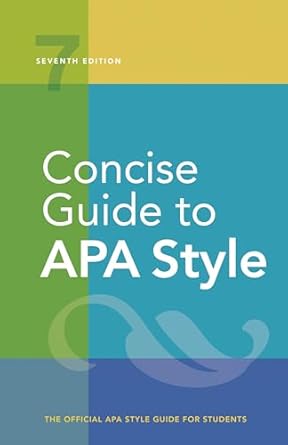[toc]
italics usage a style guide for clear writing
Concise Guide to APA Style: 7th Edition (OFFICIAL)
Page 119 Review
Unlocking the Power of Italics: A Comprehensive Guide
In the realm of writing, typography plays a crucial role in conveying meaning and enhancing readability.
Among the various stylistic tools available, italics stand out as a versatile instrument for adding emphasis, differentiating elements, and guiding the reader’s eye.
This excerpt from a style guide offers a concise yet comprehensive overview of the appropriate uses of italics, providing writers with a clear framework for employing this powerful tool effectively.
Defining Key Terms and Phrases
One of the primary functions of italics is to highlight key terms or phrases, often accompanied by a definition.
This technique serves to draw the reader’s attention to specific concepts that are central to the discussion.
As the excerpt states, “Mindfulness is defined as ‘the act of noticing new things, a process that promotes flexible responding to the demands of the environment’ (Pagnini et al., 2016, p. 91).” By italicizing ‘Mindfulness,’ the writer signals its importance and prepares the reader for its subsequent definition.
Citing Stand-Alone Works: Books, Reports, and Webpages
Italics are also essential for identifying titles of stand-alone works such as books, reports, and webpages.
This convention helps to distinguish these works from shorter pieces like articles or chapters within a larger publication.
The excerpt provides examples: “Multicultural Feminist Therapy: Helping Adolescent Girls of Color to Thrive.” This clear visual cue allows readers to quickly recognize and differentiate the cited material.
According to the excerpt, see Section 9.19 for further guidance on citing titles.
Referencing Periodicals: Journals and Magazines
Similarly, italics are used to denote the titles of periodicals, including journals and magazines.
This practice maintains consistency and clarity in referencing sources.
The excerpt offers the example: “Cultural Diversity & Ethnic Minority Psychology.” This italicized title immediately identifies the source as a periodical, providing the reader with valuable contextual information.
Check Section 9.25 for more details.
Scientific Nomenclature: Genus, Species, and Varieties
In the realm of scientific writing, italics play a crucial role in identifying genera, species, and varieties.
This convention is essential for maintaining accuracy and avoiding ambiguity in scientific communication.
The excerpt provides an example: “Cebus apella.” The use of italics clearly indicates that this is a scientific name, allowing readers to understand its significance within the context of the text.
Statistical and Algebraic Symbols
Italics also find application in the representation of statistical symbols or algebraic variables.
This convention aids in distinguishing these symbols from regular text, enhancing clarity and preventing confusion.
The excerpt provides examples: “Cohen’s d = 0.084; a/b = c/d; MSE.” By italicizing these symbols, the writer ensures that they are easily identifiable and understood within the mathematical or statistical context.
Volume Numbers in Reference Lists
Furthermore, italics are used to indicate periodical volume numbers in reference lists.
This helps readers to quickly locate the specific volume and issue of a cited article.
The excerpt provides an example: “Neuropsychology, 30(5), 525-531.” The italicized ’30’ signifies the volume number, providing a clear and concise reference point.
Anchors of a Scale
Italics help set apart anchors of scales (but not the associated numbers).
For example, the excerpt provides: “ranged from 1 (poor) to 5 (excellent)” and “rated using a Likert scale (1 = strongly disagree to 5 = strongly agree)”.
The words ‘poor’ and ‘excellent’ and ‘strongly disagree’ and ‘strongly agree’ are anchors of the scale.
Foreign Language Terms
The first use of a word, phrase, or abbreviation from another language is often italicized, especially when readers may not be familiar with it.
The guide notes: “however, if the term appears in a dictionary for the language in which you are writing (see Section 5.1), do not use italics”.
Conclusion
In conclusion, the proper use of italics is essential for effective and clear writing.
This excerpt offers a valuable guide to the various applications of italics, ensuring that writers can employ this stylistic tool with confidence and precision.
By adhering to these guidelines, writers can enhance the readability and impact of their work, conveying their message with greater clarity and force.
Buy full ebook for only $18: https://www.lulu.com/shop/american-psychological-association/concise-guide-to-apa-style-7th-edition-official/ebook/product-rmzpq54.html?page=1&pageSize=4
Italics Usage A Style Guide For Clear Writing
Read more: Understanding Copyright: A Quick Guide

